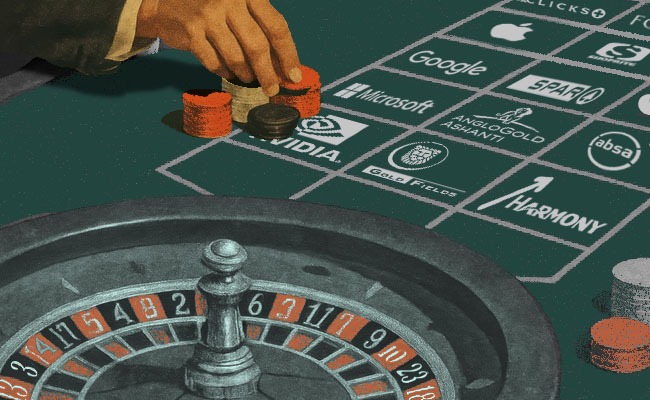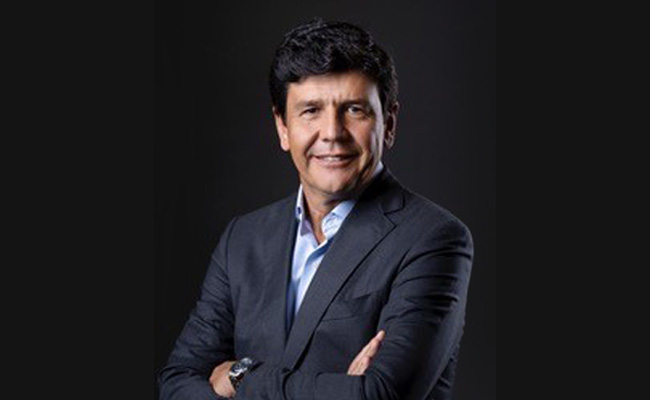In 2025, the AI boom has expanded at an astonishing pace. Nothing captures the frenzy better than chip-designer Nvidia’s recent valuation of $5-trillion.
To put that in perspective: if you earned one rand every second, it would take you 11 days to reach R1m, 31 years to reach R1bn – and 31,710 years to reach R1-trillion. Let that sink in.
When something rises in value this fast, it’s fair to ask whether we’re in bubble territory. The subprime crisis of 2008/09 and the dot-com crash two decades earlier remain cautionary tales of exuberance outpacing reality. So, is today’s AI surge the next dot-com moment?
Let’s explore the similarities, the differences, and what history may teach us.
Every generation of investors experiences a moment when technological optimism tips into mania. The late 1990s had the internet; today, it’s AI.
The parallels are striking: speculative enthusiasm detached from fundamentals, sky-high valuations, and the conviction that one technology will redefine the global economy.
During the dot-com era, investors poured billions into companies with little more than a website and a promise to reinvent traditional industries. Today, AI start-ups with minimal revenue are raising vast sums on the strength of potential rather than performance. The belief that AI will transform health care, education, finance, logistics and art feels inevitable – and immediate. The timeline, however, may prove far longer.
The valuation dynamics echo the 1990s. Nvidia, the cornerstone of the AI revolution, is now worth more than the entire German, French and UK stock markets combined. Smaller AI-linked firms – from data-centre builders to chip suppliers – have soared simply by association, a halo effect reminiscent of dot-com exuberance.
Fear of missing out is another constant. In 1999, fund managers who stayed cautious risked career damage. Today, institutional investors feel compelled to gain “AI exposure”, even without clarity on where value will ultimately accrue. Index funds, exchange traded funds and sovereign wealth funds are overweighting AI names, feeding a feedback loop between narrative and valuation.
The rhetoric of inevitability also returns. In 1999, the internet was hailed as the universal disruptor that would eliminate inefficiency and democratise access. Replace “internet” with “AI”, and the language is identical. Tech CEOs again cast themselves as stewards of a civilisational turning point.
Even the macro backdrop rhymes. Both booms followed periods of easy money and optimism. The 1990s enjoyed loose credit and a Federal Reserve willing to tolerate asset-price inflation. The post-pandemic years saw ultra-low rates and massive liquidity injections. Despite higher rates now, AI has still absorbed extraordinary amounts of capital in search of the next growth story.
In short, the AI boom shares the dot-com era’s defining traits: speculative excess, narrative dominance and humanity’s habit of extrapolating innovation into perpetual profit. The question is whether this time ends the same way.
A maturing market with real output
Yet today’s AI surge differs profoundly from the late-1990s bubble – differences that could make it more durable and less disastrous.
- Tangible utility: dot-com firms often lacked viable products or revenue. AI, by contrast, already delivers measurable productivity gains. Companies are automating processes, enhancing customer service and analysing data more efficiently. Generative AI models write code, draft contracts and design marketing campaigns. The technology is not speculative; it’s deployed, evolving and monetised.
- Robust infrastructure: the internet of the 1990s lacked broadband, cloud computing and mobile devices. AI is built on a mature digital backbone – hardware, software and data pipelines already at scale. That reduces friction and accelerates adoption.
- Concentrated capital: thousands of dot-com start-ups chased investor attention. AI investment, by contrast, is dominated by deep-pocketed incumbents – Nvidia, Microsoft, Alphabet, Amazon and Meta – with huge balance sheets and established revenues. They can sustain research and development through downturns, making the system less fragile.
- Economies of scale: the dot-com boom was about access; AI is about intelligence. Once data and computing capacity are available, marginal costs fall sharply, enabling exponential scalability. The economics resemble energy infrastructure more than e-commerce – heavy upfront investment followed by high-margin output.
- Smarter policy and investors: monetary authorities now monitor asset bubbles more closely. Regulation is stronger, and investors use valuation models and stress testing, both of which were unknown two decades ago. While speculation persists, financial systems are better equipped to manage it.
- Faster adoption: the internet took nearly a decade to translate hype into productivity gains. AI’s curve is steeper. Cloud computing and global connectivity mean innovations diffuse rapidly. Even if valuations deflate, adoption will continue, cushioning the fall.
This doesn’t mean AI is immune to correction – far from it. But when the froth subsides, a robust, revenue-generating core will remain. In that sense, the AI boom may echo the railway or electricity manias of earlier centuries: bubbles that burst but left behind transformative infrastructure.
Comparing AI with the dot-com era is less about warning than calibration. Both revolutions captured investors’ imagination and reshaped capital flows worldwide. The internet bubble burst painfully but left behind Amazon, Google and the digital backbone of today’s economy.
AI will likely follow a similar path: overinvestment, correction and eventual normalisation. History suggests volatility rather than apocalypse. Some overvalued equities and speculative start-ups will fail, but the underlying technology has already proved its power to reshape industries.
Whether this is a bubble or a secular revolution depends less on price than on perspective – and time, as always, will tell.
Stewart Dando is the chief investment officer at Austen Morris Associates International and a director at Attooh! Asset Consulting.
Top image: Rawpixel/Currency collage.
Sign up to Currency’s weekly newsletters to receive your own bulletin of weekday news and weekend treats. Register here.












